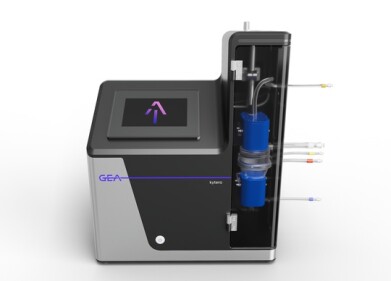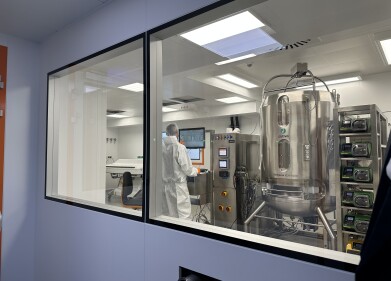Laboratory products
What is Bioorthoganal Chemistry?
Oct 13 2022
While scientists K. Barry Sharpless and Morten Meldal laid the foundations for click chemistry, Carolyn Bertozzi took things to the next level with her work on biorthogonal reactions. By eliminating the need for the copper catalyst traditionally used in click chemistry, Bertozzi developed a way to trigger reactions inside living cells and organisms. This has allowed scientists to map and study biomolecules such as proteins, lipids and glycans in living organisms, without affecting the natural chemistry of the cell.
So how does it all work? Read on as we dive a little deeper into the principles of biorthogonal chemistry and how it compares to the click chemistry framework.
Creating copper-free reactions
While cytotoxic copper catalysts are extremely effective in click chemistry, they can be toxic to living organisms. This once limited applications for click chemistry. Bertozzi addresses the issue by developing copper-free reactions. Instead of snapping molecules together in a straight line, bioorthogonal chemistry uses a strain-promoted alkyne-azide cycloaddition (SPAAC) to create right angles. This stabilises the process and makes it possible to create chemical reactions, without disrupting the cellular environment or affecting natural biochemical processes.
In an article published in the journal Bioconjugate Chemistry, the authors explain how the name is derived “from the mathematical concept of ‘orthogonality’ used to describe two entities which vary independently of one another.”
Applications for bioorthogonal chemistry
The ability to trigger chemical reactions inside living organisms has made bioorthogonal chemistry invaluable across a wide range of sectors and industries. Below, we spotlight some key applications for bioorthogonal chemistry:
- Imaging of proteins, nucleic acids, lipids and glycans
- Pharmaceutical product development
- Optimising drug delivery systems
- Mass spectrometric studies
- Identifying and tracking active enzymes
A Nobel Prize winning framework
This year, Sharpless, Meldal and Bertozzi were co-awarded the Nobel Prize in Chemistry for the development of click chemistry and bioorthogonal reactions. “Click chemistry and bioorthogonal reactions have taken chemistry into the era of functionalism. This is bringing the greatest benefit to humankind,” reads a statement published on the Nobel Prize website.
While this article has focussed largely on bioorthogonal reactions, click chemistry has a critical role to play. Without the framework that takes cues from LEGO® building blocks and IKEA flatpack furniture, bioorthogonal chemistry wouldn’t be possible. Want to know about click chemistry? We cover all bases, including different applications for the framework and how it slots neatly into the ‘green chemistry’ box in ‘What is Click Chemistry? Everything You Need to Know’.
Digital Edition
ILM 50.2 March 2025
March 2025
Chromatography Articles - Effects of small deviations in flow rate on GPC/SEC results Mass Spectrometry & Spectroscopy Articles - Waiting for the present to catch up to the future: A bette...
View all digital editions
Events
Mar 17 2025 Milan, Italy
Mar 18 2025 Beijing, China
Mar 20 2025 Brussels, Belgium
Mar 20 2025 Chandigarh, India
ACS National Meeting & Expo, Spring 2025
Mar 23 2025 San Diego, CA, USA



















